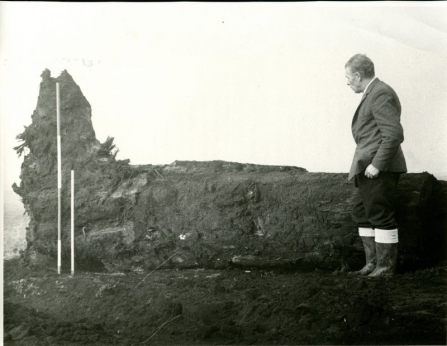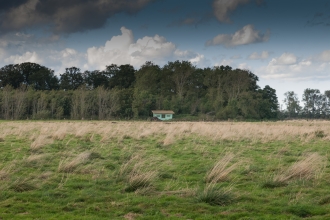Bog oak has long been an important feature of the fen landscape. Drive along any fen road and you are likely to see piles of black wood. It comes from trees that fell thousands of years ago and were buried and preserved in peat bogs. They lay beneath the surface, undisturbed in the acidic bog conditions, until the fens began to be drained. Then, as the peat dried out and shrank, the tree trunks became gradually closer to the surface of the soil.
The bog oak was an important asset for the farm workers and local villagers. After stacking and drying, it was cut and used for fuel on open hearths or in ranges. Sometimes a large piece of trunk was laid on the kitchen floor and fed gradually into the hearth, where it would last for a week or more. Until quite recently, when central heating became common, the woody smell of burning bog oak was common in the villages. The better pieces of bog oak could be valuable for the fen farmer and there was a good market for those pieces that could be made into furniture and carved decorative items such as jewellery.

Where can I find bog oak?
The Great Fen Information Point at New Decoy Farm has a carpark which is surrounded by pieces of bog oak that were unearthed during the construction.
Another very good place is on Holme Fen, where you can see pieces of bog oak still lying where they fell thousands of years ago. From the road running past Holme Post, take either of the paths north to the next dyke that runs roughly east-west, parallel to the road. That dyke that has been recently cleared out and, looking down at its sides, you can see a layer of about 2 or 3m of peat with a clear border where the underlying Jurassic Clay begins. At many places along the dyke the ends of tree trunks can be seen. It is a very clear example showing the end of the time of the forest and the coming of the fen wetlands.
Clearing bog oak
Arable fields regularly had to be cleared of bog oaks, with the trunks often piled up in so called clearance cairns. Below there is silent archive footage from decades ago showing the process of clearing bog oak, probably on Middle Farm.

